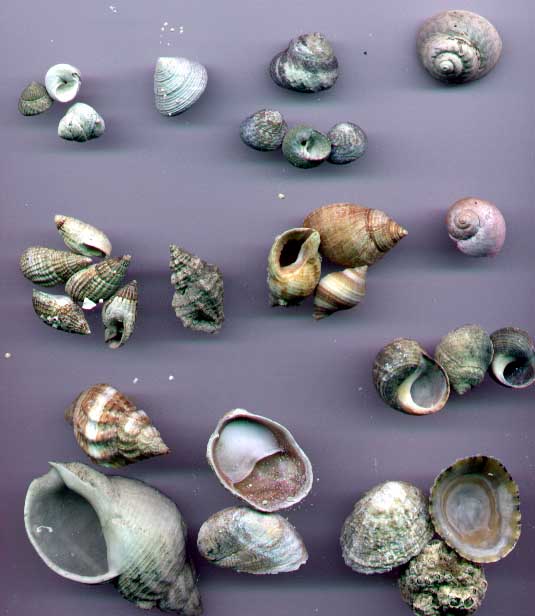
 |
British Gastropoda

Dogwhelks
Limpets
Netted Dogwhelks
Topshells
Whelks
Winkles
Ormer
Etymology. From Norman ormèr/ormer, variants of French ormier, contraction of oreille-de-mer, from Late Latin *auris maris (“ear of the sea”), from Latin auris (“ear”) + mare (“sea”).
This gastropod shell was discovered by Margaret Casey in early September on Ryde beach, Isle of Wight, amongst the pebbles.
Photographs by Nicola Storey
Coastal Visitors' Centre, Salisbury Gardens, Dudley Road, Ventnor, Isle of Wight
Although I went for the Auger Shell, Turritella communis, this species is thought to be a fossil Cerithium ALL THESE ARE WRONG (see below) The fossil gastropod is the genus Potamides, and the species is almost certainly Potamides varians. ID by Philippe Guyard
School of Earth and Environmental Sciences
University of Portsmouth
on the
Marine Wildlife of the North-east Atlantic Ocean Group
Mollusca
Hardy's Internet Guide to Marine Gastropods

Poached Egg Shell (Photograph by Jim Anderson)
To go back to the Dead Men's Fingers: if you notice a colony with a group of round brown spots on the side of one lobe, you are looking at the egg capsules of the Poached Egg Shell, Simnia patula, a curious snail that feeds on soft corals and sea fans, particularly Dead Men's Fingers. It doesn't look like a poached egg to me; it is pointed at both ends, and like the cowries (which are close relatives) it has a slit aperture running the whole length of the shell through which the animal protrudes part of its body when it feeds or moves around. The shell is white or yellow-white, so it does not show up against the white or yellow body of the Dead Men's Fingers; but its egg capsules - which are white when they are laid but later become dark brown - and the chewed patches where it has been feeding are clearly visible, and if you look, you may spot the adult Simnia. It is another western species, which you are likely to see around Devon and Cornwall or Pembrokeshire.
|
|
|
|
|
News 2018 |
Membership Form |
|